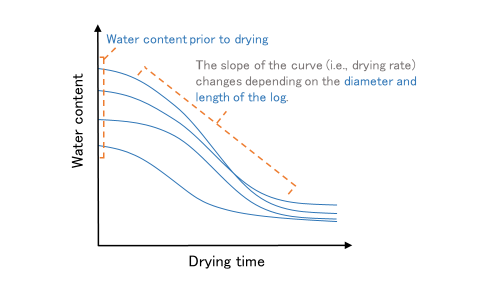Home > Research > Research Results > Research Results 2017 > Natural drying of fuel logs: a model for estimating the number of days required for drying
Update:December 27, 2017
Main content starts here.
Natural drying of fuel logs: a model for estimating the number of days required for drying
| Article title |
Estimation of drying time for air-drying of logs and evaluation of log properties affecting drying characteristics of log using hierarchical Bayesian model |
|---|---|
| Author (affiliation) |
Ken Watanabe (a), Hideaki Korai (b), Isao Kobayashi (a), Takashi Yanagida (a), Keisuke Toba (a), Kosei Mitsui (c) (a) Department of Wood Properties and Processing, FFPRI, Tsukuba, Ibaraki, Japan. (c) Forestry Research and Instruction Station of Kumamoto Prefecture, kumamoto, Japan. |
| Publication Journal |
Journal of the Japan Wood Research Society, 63(2): 63–72; March 2017, DOI: 10.2488/jwrs.63.63( External link ) |
| Content introduction |
In recent years, efforts have been made worldwide to generate electricity and to supply heating using woody biomass. This has led to the production of wood chips for fuel from unused logs generated from forest thinning. As a fuel, wood chips with low water content release a greater amount of energy. Drying is thus an indispensable process. However, when subjected to drying at a timber yard after being cut, each log dries at a different pace. This makes it difficult to accurately gauge the length of time required for drying. To address this issue, we performed a natural drying experiment for Japanese cedar logs in Ibaraki Prefecture and developed a model for estimating changes in water content during the drying period based on various properties of the log, such as water content, diameter, and length prior to drying (See Figure). This model postulates that the thicker and longer the log, the more time it requires to dry. In the experiment, we succeeded in accurately extrapolating changes in the water content of logs with varying properties, thus estimating the length of time required for drying stacks of logs. These findings are anticipated to help clarify necessary durations for natural drying of logs and will contribute to the production of wood chips for fuel, which contain less water and are uniform in quality. |
Copyright © Forest Research and Management Organization. All rights reserved.

